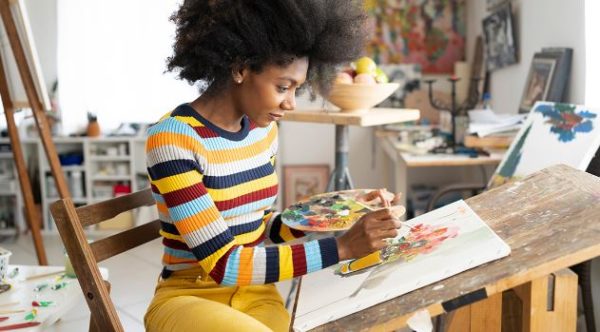Lifestyle
What is art therapy and how does it benefit people?

Art therapy as the name suggests is the process of merging psychology and healing with creative arts that help improve mental and emotional wellness.
Art therapy usually happens under the guidance of an art therapist, where people engage in different activities.
Art therapy does not limit itself to certain creative activities, but can actually just be anything creative. Pottery, singing, embroidery, painting, sculpture are just a few examples.
Through these activities, people get the chance to keep their off troubling topics and as they are busy creating a sculpture, their mind and heart also relaxes.
Art therapy isn’t confined by skill level or age, but rather is a way for anyone to relieve some stress and invest some of their energy on things that will bring them joy.
The types of Art therapy
The different types of art therapy are not complicated. In fact, the many relaxing and soothing activities that you can think of, which are also creative, can count as Art therapy.
According to VeryWellMind, “The creation or appreciation of art is used to help people explore emotions, develop self-awareness, cope with stress, boost self-esteem, and work on social skills. Techniques used in art therapy can include: Collage, Coloring, Doodling and scribbling, Drawing, Finger painting, Painting, Photography, Sculpting, Working with clay.”
These many forms of art that just allow you to be creative, distract you from troubles and help you create a better environment for yourself, count as art therapy.
1. How does Art therapy help – Helps people express
For people who struggle with articulating their feelings or putting a name and pointing out certain things or behaviours that distress them, art therapy works like a boon. Art therapy provides them a channel and way for self-expression, allowing them to communicate emotions, experiences and inner thoughts through art.
For example, a man who has been depressed or been feeling extremely lonely lately, may express himself with paintings or drawings that depict darkness, lonesome or just something empty.
2. Helps you heal emotionally
The activity if creating something, be it a drawing or a sketch serves kind of as a medium that helps people unlock and express the emotions that they were keeping pent up for long. The emotions can come out in the form of an angry outburst, crying or just shouting while you look at yourself. This release of emotions allows individuals to confront their past traumas in a manner that wont threaten them. By channeling all of these feelings and emotions into a sketch or a clay-man, people gain a sense of control.
3. Helps become more aware
For people dealing with unhealed emotions and trauma, creating art acts as a way to let go and express their feelings. The art they create and draw is like a mirror into their inner world, offering clues and hints about what they think and feel. Although it might appear that the person is just drawing some lines on a canvas, an art therapist knows how to interpret those drawings and then help the person heal from that emotion. As the colors mix and the shapes take form, the person too gains insights, allowing them to connect with themselves on a more holistic level.
4. Stress reduction
Apart from the strong emotions and trauma, art therapy is also for those who are merely looking for a place or a way to reduce the stress of everyday activities. Creating art is like a soothing balm for the mind, which gives you relief from the stress that is weighing you down. As you start creating and colouring, stress eventually lowers and allows you to look at things in a more positive way. The strokes of a brush or the shaping of clay become a calming ritual, promoting a serene state of mind.
Is art therapy suitable for all
Well, let’s just say that art therapy does not discriminate. It does put you in boxes of who is worse off than the others or require you to shell out money for expensive visits. If you wish to, art therapy can happen right in the comfort of your room or in one where a therapist guides you through the way. Unlike traditional talk therapy, which heavily relies on verbal communication, art therapy offers a non-verbal method of expression. This makes it very beneficial for people who have trouble communicating and expressing. Plus, art therapy is available to all. Be it a man battling with childhood trauma or a woman going through a hard time at the office.
But, it is also important to remember that art therapy is not a medicine that will kill the problem, it is just a starting process that will help you keep your mind off the problem for some time.






